Raphidophora Decursiva is an easy-to-care epiphyte home plant. The plant has wide leaves and this gives it an appearance that is similar to that of palm fronds. As a young plant, the leaves of the R. Decursiva are continuous and small.
The leaves begin to develop lobes around the edges and one’s deep enough to be almost within the reach of the central vein, as they get older.
Rhaphidophora Decursiva are great climbers and grow up to 40 feet in the wild and max out at about 5 feet in the house. The typical grow on tree branches, from where they can get sunlight under the canopy of the tree, and their roots coil down around the tree into the soil below for nutrients.
Origin and Classification
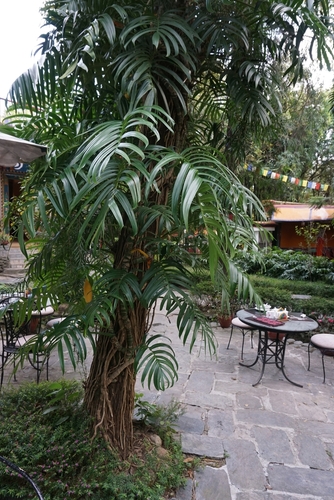
The Rhaphidophora Decursiva emanated from the tropical forests of Southeast Asia, India, as well as the hillock of the Himalayas in Southern China. R. Decursiva is an epiphyte that hails from the Araceae family. The plant is known to grow on the branches of the forest trees in the mid-air with the help of modified aerial roots.
The aerial roots of R. Decursiva can be as thick as some tree trunks, and it can climb down below as far as 40 feet to reach the soil for nutrients. The plant reaches for light under the canopy of trees it is growing from. R. Decursiva is a great house plant as it adapts to the limited light and nutrients indoors.
Features
The Rhaphidora Decursiva plant can easily be taken for a creeping philodendron, especially the Philodendron Decursiva, at other times, it can be taken for the Monstera Decursiva. This error is common because of the similarities between the leaves of a young R. Decursiva and those of the P. Decursiva.
The other misidentification is also hinged on the Rhaphidophora Decursiva because it looks like these other plants are at different stages in their life cycle. These other plants it is misidentified for, are also in the same family but emanate from different genera.
R. Decursiva’s known to grow an astonishing 40 feet from root to foliage tip in the natural habitat and will grow about 5 feet as a house plant.
Flowers and Leaves
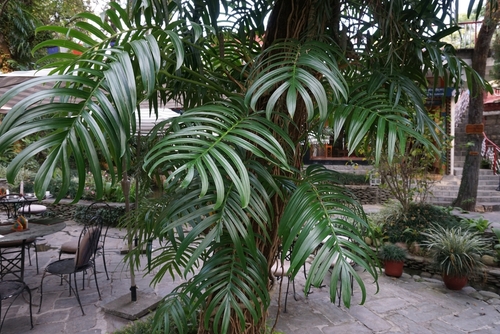
In its natural habitat, the leaves of the Rhaphidophora Decursiva can grow up to 40 inches in length and about 20 inches in width. These enormous leaves trap all the available light in the space (natural habitat or home) they grow in. At the early stage of growth, the R. Decursiva leaves are small and they grow continuously.
As time goes by, they begin to develop lobes at the edges and gradually increase in size. The leaves grow broader while the asymmetric lobes continue to deepen until it reaches the central vein of the leaves. This gives the R. Decursiva leaves a look that is similar to palm fronds.
Flowers of matured R. Decursiva usually bloom in the spring and summer. These inconspicuous flowers are bisexual, yellowish-white in colour, and are borne on a spadix shaped like corn. The house-grown R. Decursiva may never bloom its flowers.
Tolerance and Resistance
Rhaphidophora Decursiva can thrive in hot tropical conditions with temperatures of 50 degrees Fahrenheit and above, enjoys high humidity but can tolerate normal household humidity, it can survive with less water during fall and winter or non-growing seasons.
The plant is resistant to pests such as mealybugs, whiteflies, scale, thrip, etc., and is prone to getting a disease from being pruned with an unsterilized scissor or blade.
Height and Growth
Rhaphidophora Decursiva is a creeper that grows fast in the growing season, spring and summer. To experience the matured R. Decursiva leaves, you would need to give the plant something to climb while in the juvenile stage.
The plant can grow up to 40 feet from top foliage to root tip in its natural habitat, and only grow to about 5 feet and max out as a houseplant. The leaves of R. Decursiva can grow up to 20 inches in length and 40 inches wide in their natural habitat. Lastly, the plant will grow towards the available light source.
Maintenance and Durability
R. Decursiva is low maintenance and low care required plant that is also a perfect indoor plant. The plants will thrive with minimal maintenance and care.
Basic Care of Rhaphidophora Decursiva
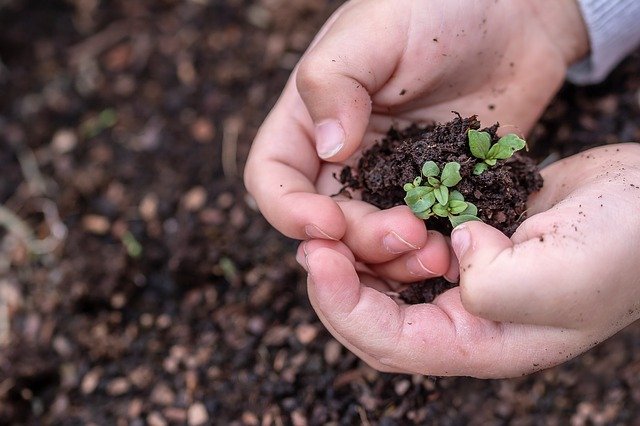
Rhaphidophora Decursiva as earlier stated is a low maintenance house plant. If placed indoors, provide a pole or totem for the plant to climb on, dust the leaves with cloth and water when dry.
For outdoors, you can hose down the leaves from dust or pets, use pesticides, pruning to keep the plant growing in the designated area, and keeping it well-drained will avoid the plant being easily overwatered.
R. Decursiva can survive both indoors and outdoors as its broad leaves can carry out photosynthesis with the amount of light in any space. The plant doesn’t need direct sunlight, can survive low or high humidity, and will also thrive at moderate temperatures.
Light and Watering
Rhaphidophora Decursiva requires a bright, indirect light source. The plant grows in the monsoon rainforest as an understory, thus, placing it outdoors in a place with filtered sunlight that is either bright, medium or low.
R. Decursiva placed in a low or medium-light source will grow slowly unlike one in a bright light source. Also, do not place in direct sunlight, or it will get burned – edges and tips of leaves are brown, leaves go crispy, and the whole plant appears washed out.
Rhaphidophora Decursiva is aroids, thus they need moist soil, not soggy or wet soil to grow. Watering should take place when 2 or 3 inches of the soil is dry and make sure to not over irrigate.
It is important to ensure that the R. Decursiva pot is well-drained. The frequency of watering is dependent on the amount of light, temperature and humidity conditions the plant is in.
If the light is bright, low humidity or high temperature, the plant’s soil loses a lot of moisture quickly. During winter or non-growing season, the soil moisture loss is slower and watering can be cut down to about once a week.
Soil and Repotting
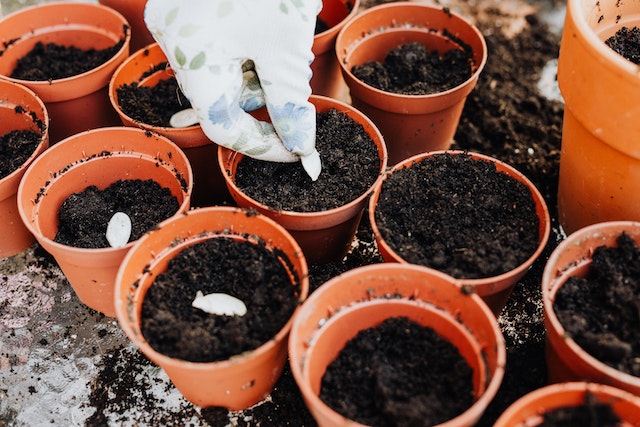
A well-drained loamy soil, rich in nutrients, and a pH of 5.6 to 6.5 (moderate to slightly acidic) is the soil for Rhaphidophora Decursiva. An alternative mix is 50% all potting mix, 10% perlite, 10% peat moss, and 30% orchid mix will serve as a great soil for R. Decursiva.
The pots of R. Decursiva need to be repotted every year or two. As fast-growing climbers, they go root-bound when they have outgrown their current pot and nutrients. The root bound is noticeable when the roots grow through the drainage holes created in the pot.
It is best to repot R. Decursiva during spring, and if repotting isn’t down after showing root-bound signs, the leaves will regress to juveniles. To repot the plant, use pots 2 or 3 inches wider in diameter than the current pot.
Temperature and Humidity
Rhaphidophora Decursiva flourishes in temperatures between 60 to 80 degrees Fahrenheit, and if grown outdoors it should be taken in when temperatures are below 50 degrees Fahrenheit. It can survive high temperatures like 85 degrees Fahrenheit but would require frequent watering in this condition.
This tropical rainforest climber will thrive in 60% humidity or more, and they can survive in household conditions. If humidity is low, you should consider misting or getting a humidifier or a tray of pebbles.
Fertilizing, Pruning and Propagation

R. Decursiva can be fertilized during spring and summer once or twice a month with a balanced liquid house fertilizer at half-strength. Don’t fertilize R. Decursiva in its non-growing season – winter and autumn.
Pruning requires removing wilting, small, and yellow leaves. If you are about maintaining the size of the plant, cutting off stems will lead to branching and fuller growth. Always make sure to prune with sterilised tools to avoid cross-infection.
Rhaphidophora Decursiva can be propagated via stem cutting in water or soil/potting mix, and air layering.
Common Problems Caring For Rhaphidophora Discursiva
R. Decursiva is a plant that requires low maintenance grooming and care, resistant to pets and a few pets, but is very easy to get infected by pruning tools. It can also suffer from overwatering and underwatering.
Here are some of the problems R. Decursiva may experience.
Mosaic Virus
This virus can be contracted using non-sterilised pruning tools on the plant. Symptoms include yellow spots or lesion, stunted growth, veins yellowing, distorted leaves or growing point, light and dark green patterns on leaves. It has no cure. It is only preventable and infected plants should be isolated and destroyed.
Root Rot
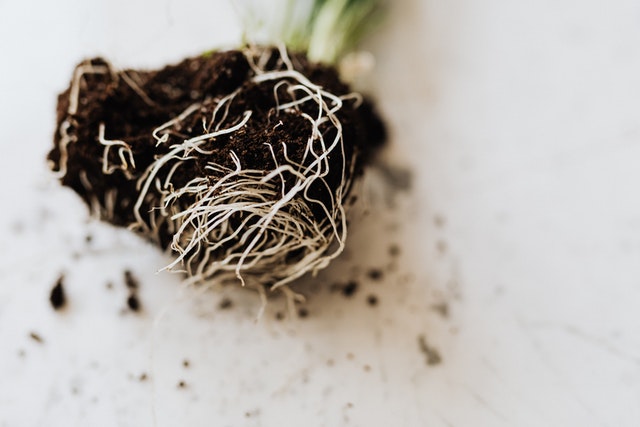
The plant may also experience root rot due to overwatering, poor air circulation, poor soil drainage, etc. Symptoms include soft mushy stems, stunted growth, wilting, black mushy roots, leaf discolouration, death of foliage, shoots, and plant.
Juvenile Leaves
Plant with mature adult leaves can revert to juvenile leaves if the plant is root-bound, in the wrong growing conditions, and has no place to keep climbing.
See a similar post: Ruschia Nana Dwarf Carpet Of Stars
Frequently Asked Questions
Is Rhaphidophora decursiva rare?
Yes. Rhaphidophora Decursiva is a rare tropical epiphyte that a lot of homes don’t have, and are not easily available in local nurseries. It makes them extra special and a brilliant addition to any home.
Is Rhaphidophora Decursiva a Monstera?
Rhaphidophora Decursiva is not a Monstera despite being often mistaken as one. They are of different genera i.e Rhaphidophora and Monstera but belong to the same family, Araceae.
Is Rhaphidophora Decursiva a philodendron?
Rhaphidophora Decursiva is not a philodendron even though they may have some semblance at a stage in the Rhaphidophora’s growth stage. They belong to the same family, Araceae, but different genera.
Is Rhaphidophora Decursiva Poisonous?
Unfortunately Yes. All parts contain toxic substances that will cause a burning sensation to pets and humans. Worse, contact dermatitis to sensitive individuals. If ingested, lips, mouth, and tongue will swell and experience a burning sensation.

Hey, I’m Lisa and I’ve been an avid gardener for over 30 years. I love writing, talking and living in the garden! Feel free to connect with me on my socials below

